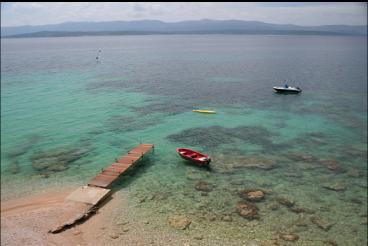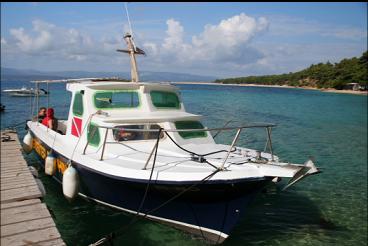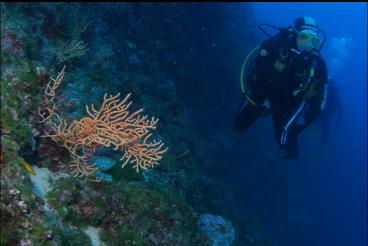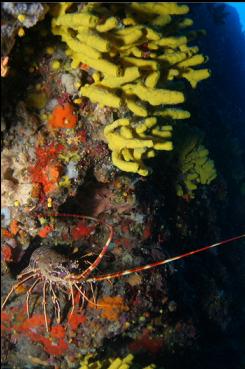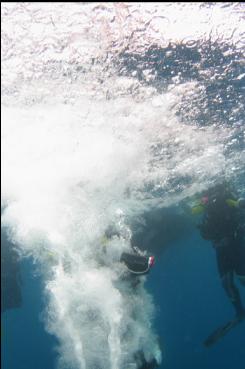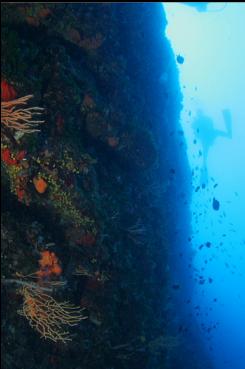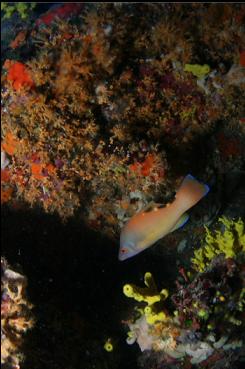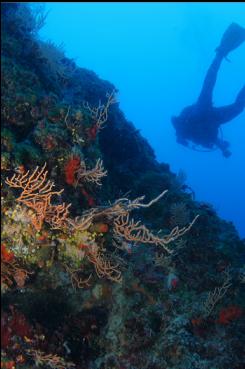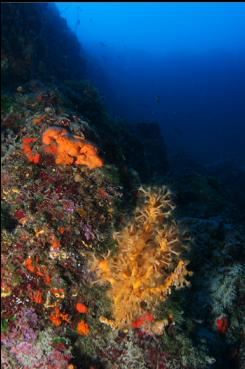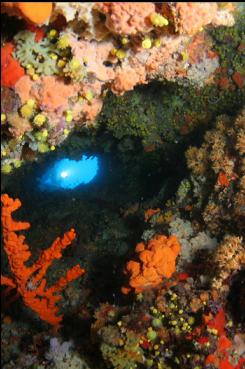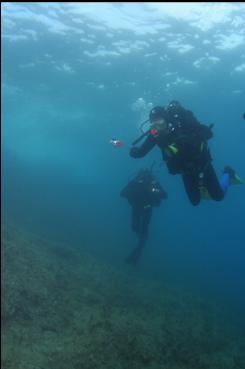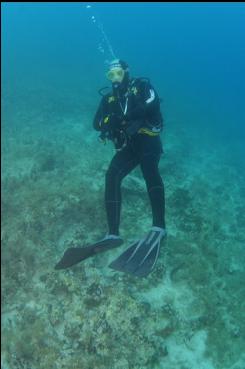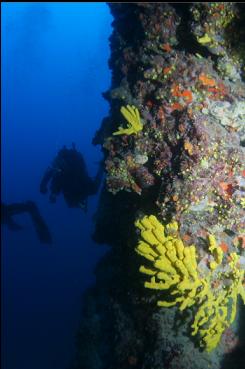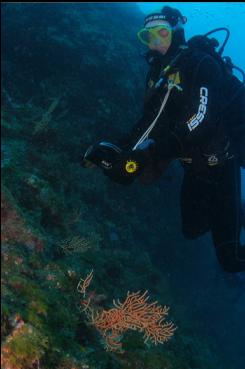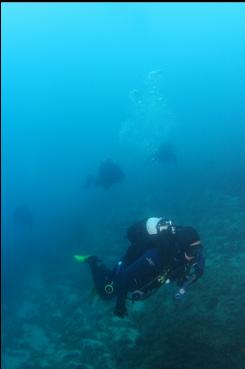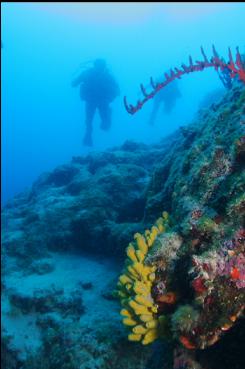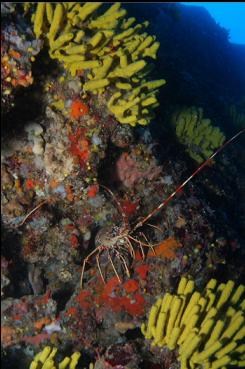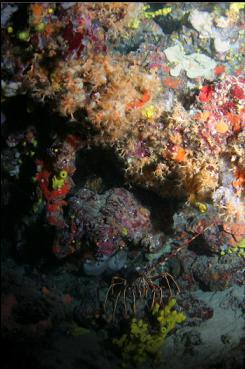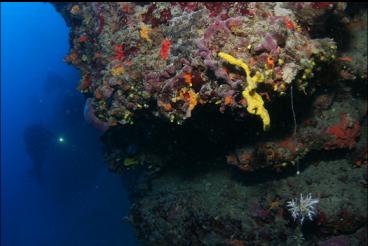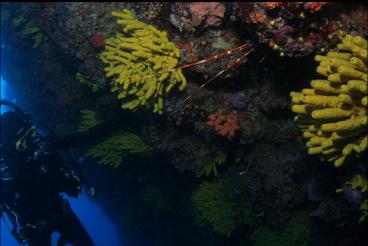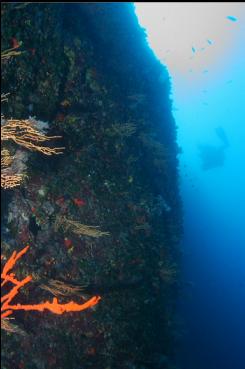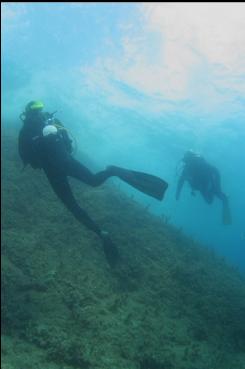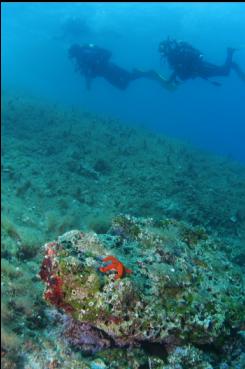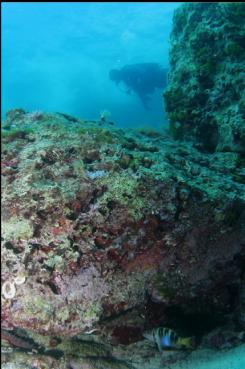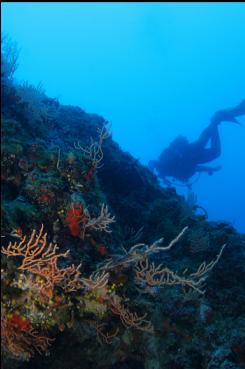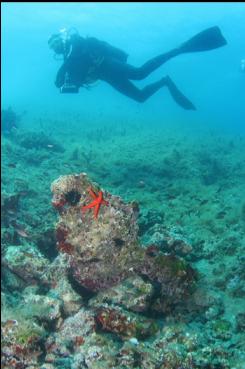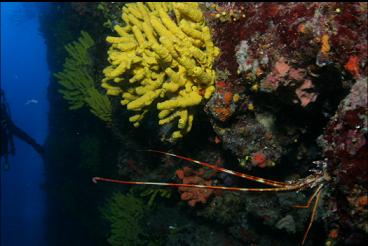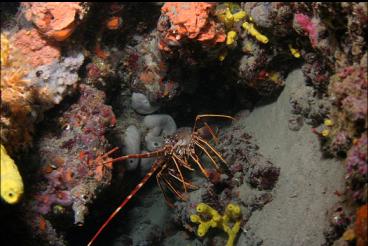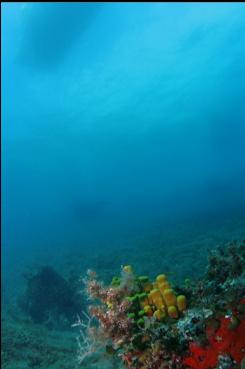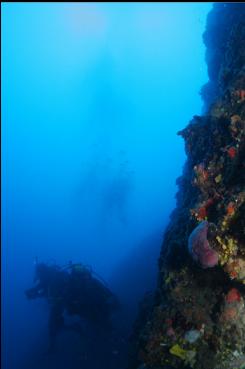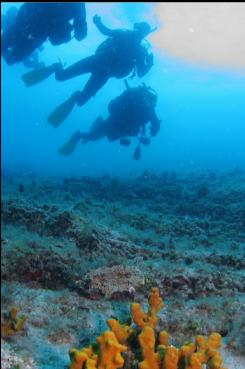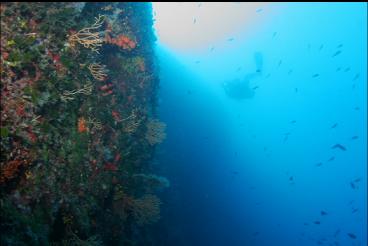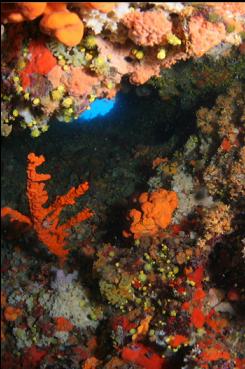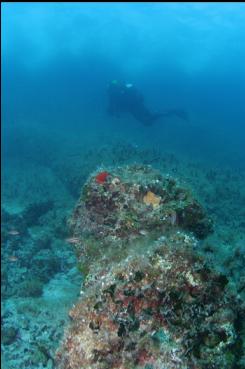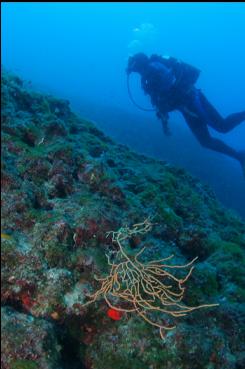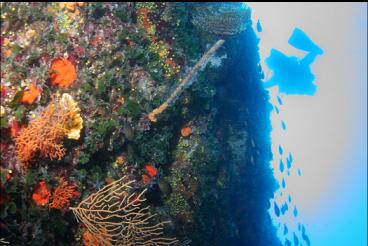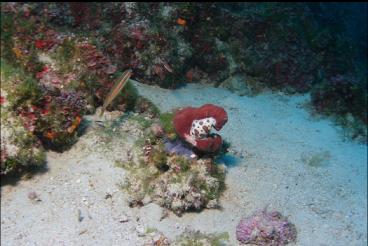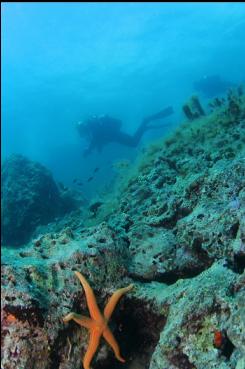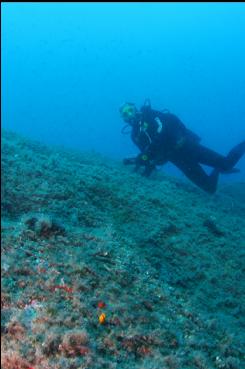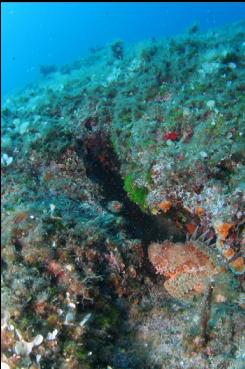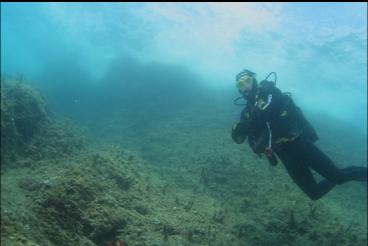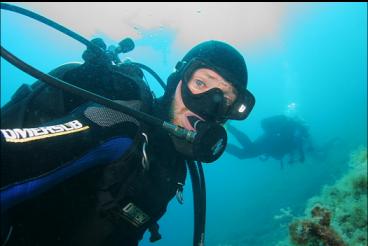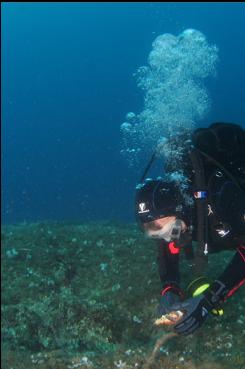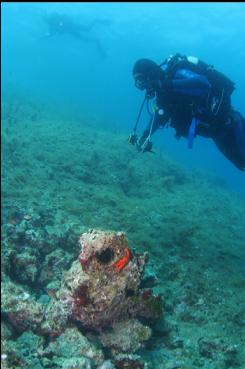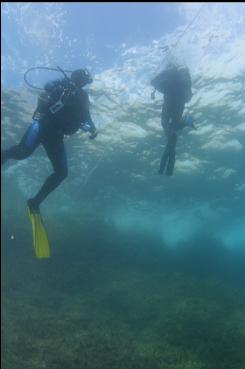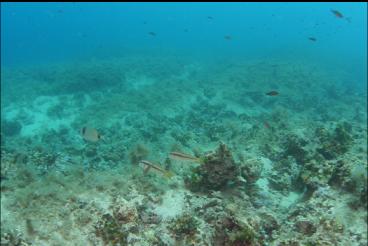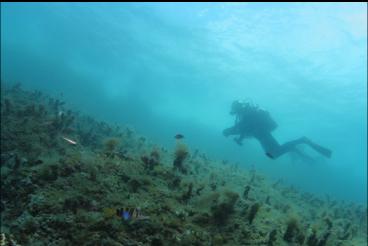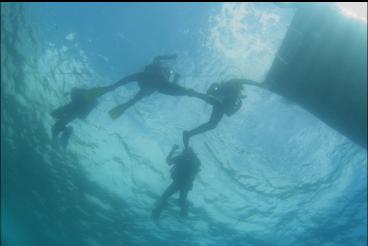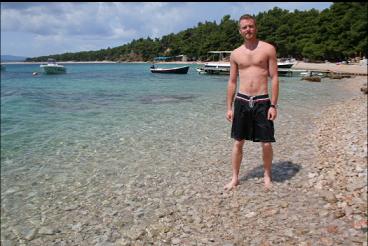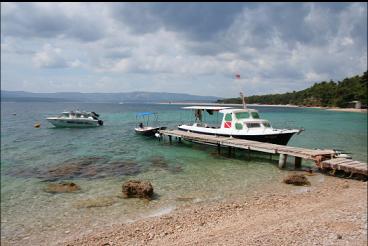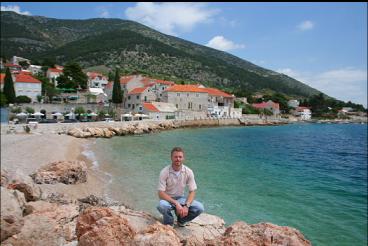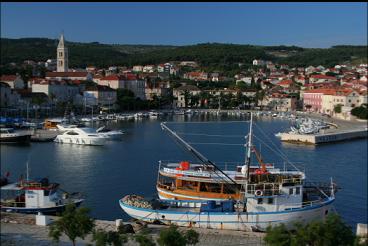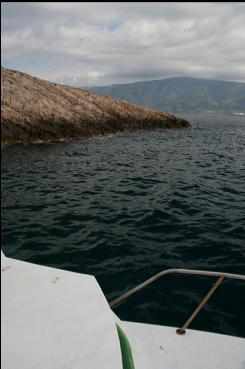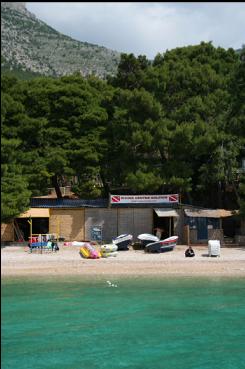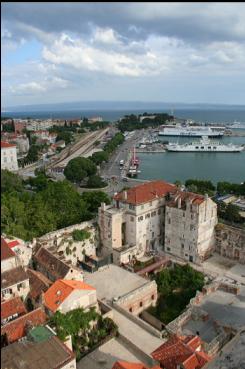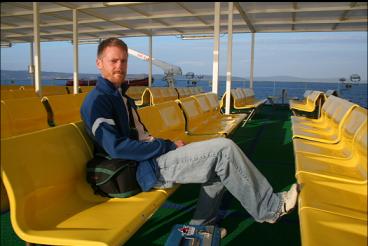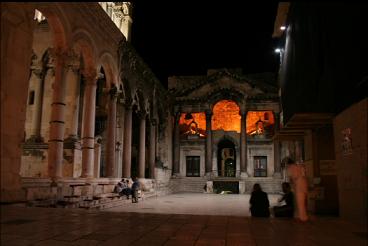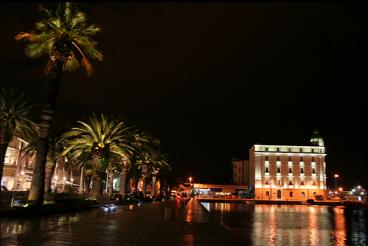I was Split, Croatia in late May, 2008. I could have spent days walking around it's old town on the harbour front, with it's narrow medieval streets, cafes and even a Roman emperor's palace, but of course I wanted to go diving too. Split is part of Croatia's Dalmatian coast on the Adriatic part of the Mediterranean. There are swarms of islands offshore (almost like B.C.'s Gulf Islands) so I caught a crack-of-dawn ferry to one of them (Brac, pronounced "Brach"). After an hour's sail, the ferry ended up in the town of Supetar, where I caught a taxi across the island, through mountains of rock, heather, scotch broom, flocks of sheep and cliffs dropping down to blue bays. The dive center I was going to (Dolphin Dive) was based just outside the town of Bol on a beach below the Hotel Bretanide. There are several dive outfits in the Split/Dalmatian Islands, but this is the only one within a reasonable distance that bothered to answer my e-mails and phone calls. The dive shop is right on the beach next to one of the most famous beaches in Croatia. I went out on the boat with a small group of divers from Poland. It seems that, to cope with the wide variety of tourist nationalities that visit, almost everyone here speaks several languages. Our dive site for the day was across a channel to another island (Hvar). In the multi-lingual dive brief, the instructor/boat captain/dive master showed us a diagram of the site which was a wall dropping down to around 150 feet, with a flatter shallow area on top where we could get rid of some nitrogen. Water temperature was around 18-19 degrees and visibility around 50 feet. The dive master explained that this was the worst time of year for visibility due to plankton, but it still seemed fine to me. The shallow areas were mostly bare rock with algae and small schools of fish picking around. Most of the colour seemed to be below 100 feet deep. On the wall, invertebrate life seemed to be segregated in separate sections. One part of the wall was covered with yellow sponges and lobsters. Another was home to gorgonian corals. When I looked close with a light, I could see swarms of other, smaller invertebrates that looked like zoanthids, soft corals, big tube worms, etc. Colourful wrasse hid under little overhangs. One section had a tiny tunnel that was packed with colour. We followed the wall where it met the sand for awhile at 150 feet, before returning to the top of the reef. I saw a few scorpion fish (they looked like Irish lords) on the way up. On the boat the dive master was almost apologetic, trying to explain that the life here is different from the Red Sea or South Pacific coral reefs and said that some divers are disappointed when it's not what they expect. I think that that's exactly why I liked it. When I dive "big" tropical destinations, I know almost exactly what it will look like, since TV and magazines are saturated with it, but here, everything was a surprise. I wish I had another day or two to do some more diving in the area. other local dives include ancient amphora wrecks and one of the largest caverns in the Mediterranean.


